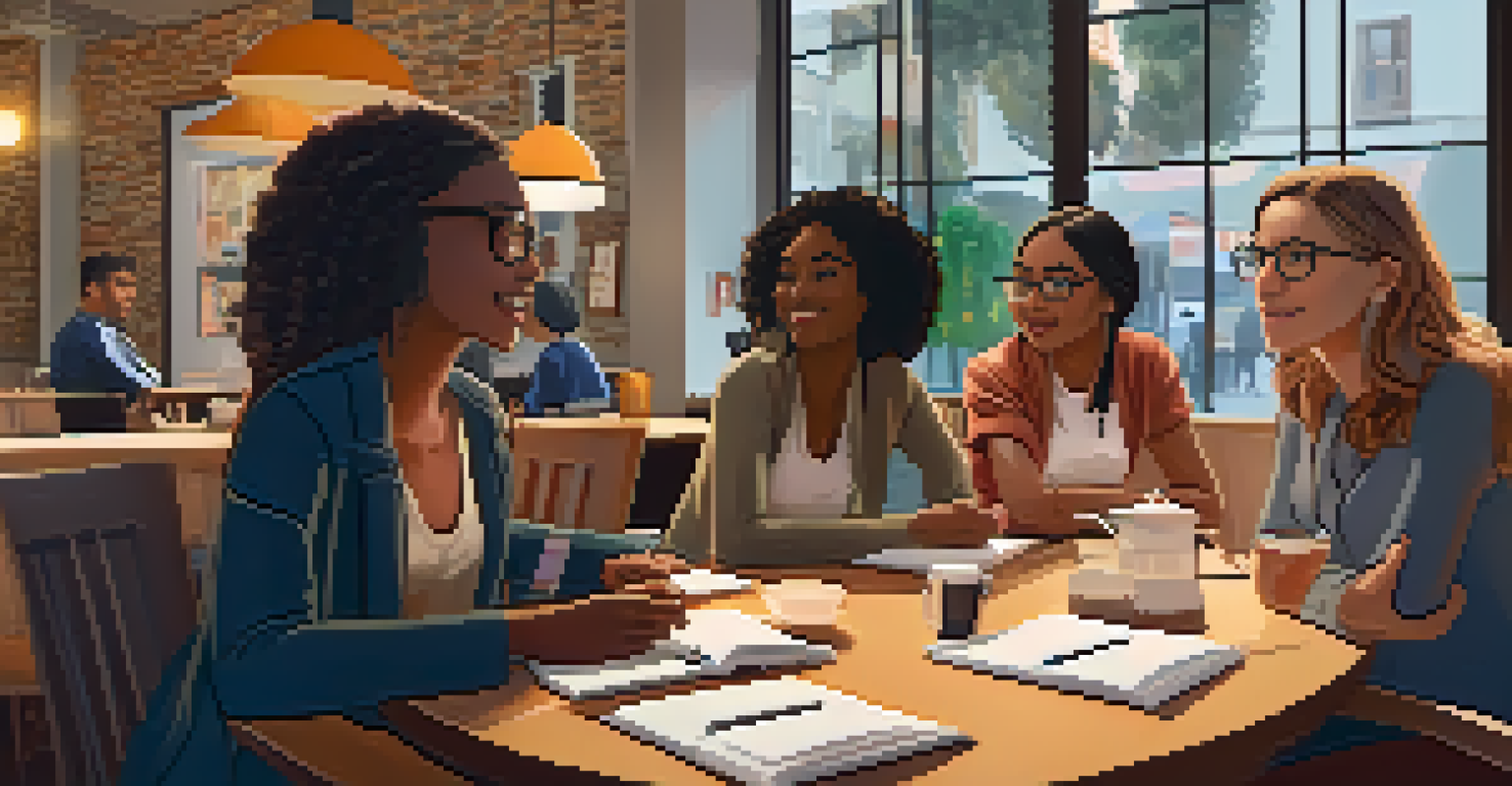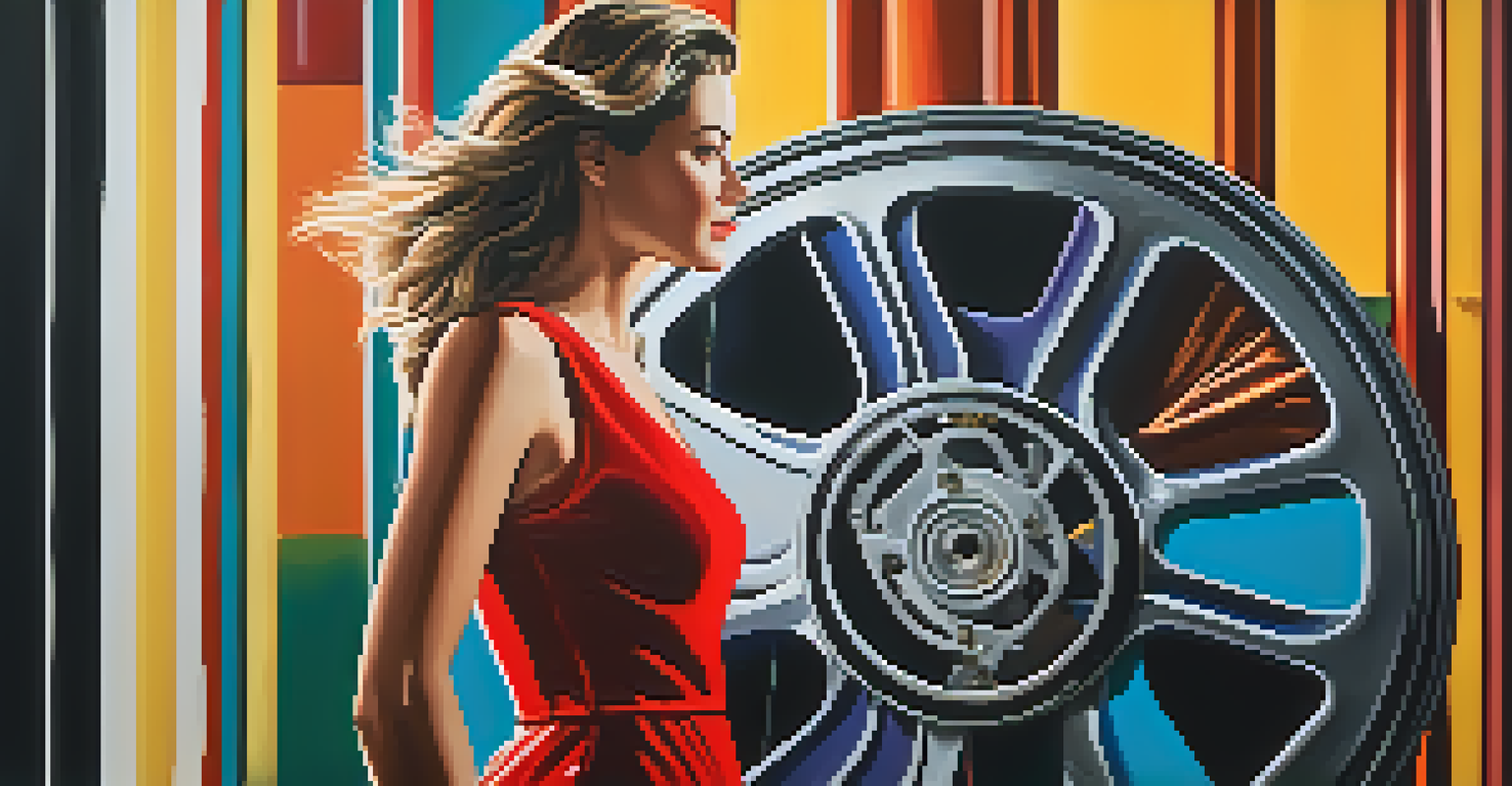Women in Film Criticism: Voices Shaping Perspectives

The Historical Context of Women in Film Criticism
Historically, film criticism has been a male-dominated field, with women's voices often marginalized. This trend can be traced back to the early days of cinema, where women were rarely given a platform. However, as the film industry evolved, so did the opportunities for women to express their perspectives on film.
The future belongs to those who believe in the beauty of their dreams.
In the past few decades, we've seen a gradual shift as more women began to enter the profession. This change is not just about the numbers; it's about the diverse viewpoints that women bring to the table. Their unique experiences and insights are crucial for a more comprehensive understanding of cinema.
Notable pioneers, such as Pauline Kael and Janet Maslin, paved the way for future generations of female critics. Their influence can still be felt today, as current critics build upon their legacies while carving out their own spaces in the industry.
The Importance of Diverse Perspectives in Film Criticism
Diversity in film criticism is essential because it enriches the conversation around films. When women, along with individuals from varied backgrounds, contribute their insights, it creates a more holistic view of cinematic works. This diversity allows audiences to connect with films on multiple levels and appreciate different interpretations.

For instance, a female critic might approach a film through the lens of gender dynamics, uncovering subtleties that male critics might overlook. This kind of analysis can lead to deeper discussions about representation and storytelling in cinema. As a result, it helps elevate important social issues, encouraging filmmakers to consider broader narratives.
Women Reshape Film Criticism
The increasing presence of women in film criticism enriches the dialogue around cinema and challenges traditional narratives.
Moreover, when audiences encounter a variety of voices in criticism, it fosters an inclusive environment. This engagement not only benefits viewers but also challenges filmmakers to think critically about the stories they choose to tell and how they resonate with diverse audiences.
Challenges Faced by Women in Film Criticism
Despite the progress made, women in film criticism still face numerous hurdles. Gender bias can lead to their work being dismissed or undervalued, often overshadowed by their male counterparts. This struggle for recognition can be disheartening, especially when their insights are equally valid and impactful.
I think it’s really important to have a voice in your own story, and to be able to tell the stories that you want to tell.
Additionally, the digital landscape has introduced new challenges, as social media can amplify both support and criticism. Female critics often encounter harsh backlash or trolling, which can deter them from expressing their opinions freely. This toxic environment can hinder their ability to critique films without fear of personal attacks.
Nonetheless, many women continue to persevere, finding strength in community and support networks. By collaborating with one another, they amplify their voices and create a safer space for discussion. These connections not only empower individual critics but also contribute to a stronger collective presence in the industry.
Notable Women Film Critics and Their Contributions
Several women have made significant contributions to film criticism, shaping the way we understand cinema today. Critics like Lisa Schwarzbaum and Ann Hornaday have not only offered keen insights but have also influenced public discourse through their reviews. Their ability to articulate the complexities of film has inspired many aspiring critics.
Moreover, recent voices like April Wolfe and Inkoo Kang are redefining the landscape with their fresh perspectives. They challenge conventional narratives and engage audiences in new ways, making film criticism more accessible and relatable. Their work highlights the importance of contemporary issues, such as representation and inclusivity in film.
Diverse Voices Enhance Understanding
Incorporating diverse perspectives from women and other underrepresented groups allows for a more comprehensive appreciation of films.
These critics serve as role models for the next generation, demonstrating that diverse voices can thrive in this space. By championing women’s perspectives, they encourage budding critics to find their own voices and contribute to the ongoing dialogue in film.
The Role of Social Media in Empowering Women Critics
Social media has transformed the landscape of film criticism, providing a platform for women to share their thoughts and insights. Critics can now reach wider audiences, fostering discussions that extend beyond traditional media outlets. This democratization of criticism allows for a richer exchange of ideas and perspectives.
Platforms like Twitter and Instagram enable women to connect with each other and share their experiences. By building networks and communities online, they can support one another in navigating the industry’s challenges. This sense of solidarity is crucial in amplifying their voices against the backdrop of a historically male-dominated field.
Additionally, social media encourages engagement with audiences, allowing critics to receive immediate feedback. This interaction can lead to more nuanced discussions and help shape the way films are perceived. As women continue to carve out their spaces in this digital arena, they are reshaping the future of film criticism.
The Future of Women in Film Criticism
Looking ahead, the future of women in film criticism appears promising, with an increasing number of female voices emerging. As more women enter the field, they bring fresh perspectives that challenge the status quo. This shift not only enriches the dialogue around films but also inspires future critics to pursue their passion.
Moreover, as audiences become more aware of the importance of diverse perspectives, there is a growing demand for varied voices in film criticism. This trend encourages media outlets to prioritize hiring women and underrepresented voices, fostering an environment of inclusivity. The cultural landscape continues to evolve, paving the way for a more balanced representation in criticism.
Social Media Empowers Female Critics
Social media provides a platform for women critics to share their insights, connect with audiences, and foster supportive communities.
Ultimately, the impact of women in film criticism will shape the way we view and discuss films for generations to come. By advocating for diverse storytelling and challenging existing narratives, they will continue to influence the industry and inspire audiences to engage with cinema on a deeper level.
Conclusion: Amplifying Women’s Voices in Film Criticism
In conclusion, women in film criticism play a vital role in shaping perspectives within the industry. Their unique insights and experiences contribute to a richer understanding of cinema. As we celebrate their contributions, it's essential to recognize the challenges they face and work towards creating a more equitable space for all voices.
By supporting women critics and amplifying their work, we foster a culture of inclusivity that benefits everyone. This effort not only enhances the quality of film criticism but also encourages filmmakers to create stories that resonate with diverse audiences. In this way, we can ensure that the future of film is reflective of the multifaceted world we live in.

As we move forward, let’s commit to championing women’s voices in film criticism. Together, we can create an environment where all perspectives are valued and celebrated, enriching the cinematic experience for everyone.